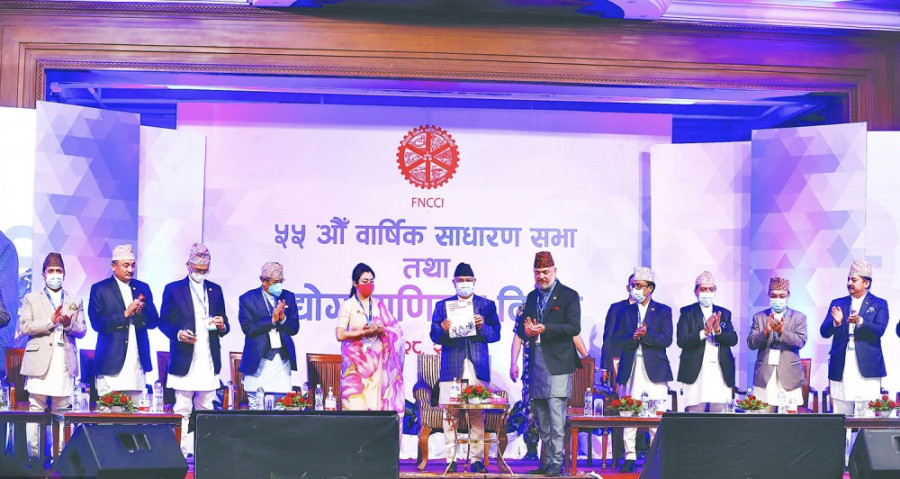Money
Nepal’s apex private sector body aims for ambitious $100 billion economy by 2030
A vision paper launched by the Federation of Nepalese Chambers of Commerce and Industry has envisaged an ambitious target to generate 2.2 million jobs in a decade.
Post Report
Nepal’s apex private sector body on Saturday unveiled its vision paper envisaging an ambitious target to generate 2.2 million jobs by 2030 by achieving an annual economic growth target of 12 percent.
The Federation of Nepalese Chambers of Commerce and Industry said its vision ‘National Economic Transformation 2030’ aims to increase the country’s gross domestic product (GDP) to $100 billion by 2030 from $39 billion in 2019-20.
The paper aims to reduce the trade deficit by 50 percent.
According to the federation, every year an estimated 500,000 people enter the country’s labour market but only 200,000 find jobs. The successful implementation of the vision will create jobs, reduce widening trade deficit, substitute imports, the federation said. For this, export strategy and promotion of a special economic zone (SEZ) needs to be prioritized, it said.
“If the vision paper is implemented honestly, there will be investment of $150 billion in the upcoming decade. Of the total investment, around $108 billion will come from the private sector,” said Shekhar Golchha, president of the federation.
“But government cooperation is essential in the implementation of 100 projects prepared by us [the federation] to achieve this growth target,” he said.
According to him, the federation could implement 40 mega projects within two years. “These projects are implementable and returnable projects. We are ready for the expansion of the economy,” he added.
The National Economic Transformation aims to create a convenient and competitive business environment, promote international trade, develop the micro, small and medium enterprises and promote start-ups.
Similarly, the vision paper has accorded priority for robust infrastructure development, human capital management and capacity development, and a responsible private sector for the investment promotion.
“We can increase the investment in infrastructure in a big way,” said Golchha.
Prime Minister KP Sharma Oli addressing the 55th annual general meeting of the federation said that the government is ready to change any policies to facilitate the private sector.
“The private sector needs to pinpoint and make the government clear what they exactly are expecting from the government,” he said. “The government is open to discuss with the private sector to achieve the motto of Prosperous Nepal, Happy Nepali.”
As per central bank report 96 percent of industry was closed during lockdown last year and the economy was negative by 4.5 percent in the first quarter of this year which started reviving in the second quarter.
Golchha said that indicators have shown that the country’s economy is reviving gradually.
In the last fiscal year 2019-20 ended mid-July, Nepal suffered the first economic contraction in 37 years as Covid-19 related social distancing measures and lockdowns paralysed the country.
A slow recovery in the ongoing fiscal year 2020-21 is expected to boost the growth rate to 2.7 percent, backed by a favourable monsoon and an optimistic outlook that the Covid-19 related disruptions will fade and government relief spending will materialise, according to a recent World Bank report.
As per the report entitled South Asia Economic Focus Spring 2021: South Asia Vaccinates, Nepal would recover gradually and achieve a growth rate of 3.9 percent in 2021-22 and then 5.1 percent by 2022-23, based on the baseline projections of a successful domestic and global vaccination rollout and a gradual resumption of international tourism, which is expected to fully recover after two years.
“There is a risk that political uncertainty, if prolonged, may undermine investment sentiment,” the report said.




 13.12°C Kathmandu
13.12°C Kathmandu













